Ever watched your feline friend purring contentedly while their tail twitched back and forth and wondered, “What in the world are they trying to tell me?” You’re not alone! When your whiskered friend shows off that classic cat purring and wagging tail combo, it might seem like cracking a secret code. Are they happy? Annoyed? Overstimulated? Let’s unravel the mysteries behind these behaviors to help you connect with your kitty on a deeper level.
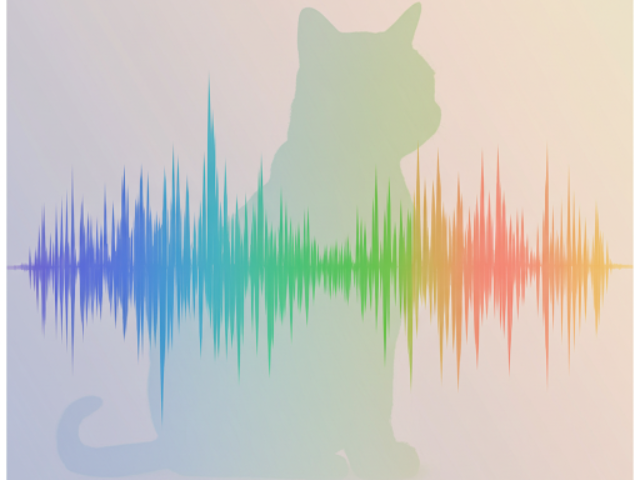
Cat purring is a rhythmic sound produced by the rapid movement of muscles within the cat’s larynx. It changes the air pressure as the cat breathes, creating that timeless, soothing tone that makes you smile no matter what day you have.
Many believe that purring means your cat is always happy, but purring is a complex behavior with different meanings. It could indicate self-soothing when your pet is under stress. Your cat might also purr if they are in pain or afraid—using the vibrations to help heal or comfort themselves.
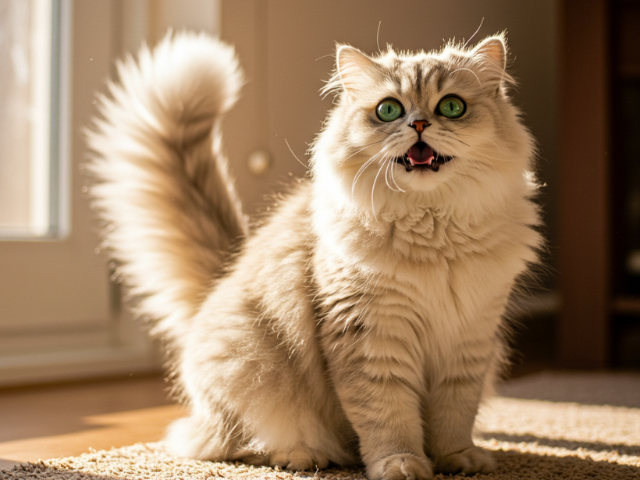
While you might connect a soft purr with snuggles and warm laps, a cat’s purr serves multiple functions. One is to express pleasure and satisfaction. When you pet your cat in the right spot, the gentle purr can be a happy “thank you” from a contented soul.
Sometimes, however, the sound serves as a self-soothing mechanism. When facing stressful times or recovering from minor injuries, your cat may purr very softly. Veterinarians believe these low-frequency purrs might help reduce inflammation and increase tissue regeneration.
Another interesting factor is the so-called “solicitation purr.” Your cat uses this sound when they desperately need something, such as extra treats or your undivided attention. Although it sounds like a relaxing purr, subtle differences in tone and rhythm indicate that your furry companion is asking for something.
Understanding these differences helps you appreciate that every purr carries a message. Whether your cat is expressing delight, self-healing, or even a quiet plea for help, closely listening will guide you in knowing when to offer an extra treat or a pause for rest.
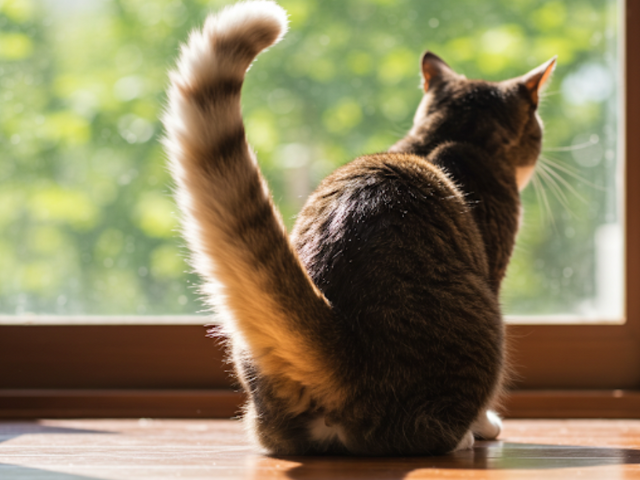
While a wagging tail in dogs usually signals happiness and excitement, a cat wagging their tail doesn’t typically mean they’re overjoyed. It often means they’re in a heightened arousal state, intensely focused, and have a lot of pent-up energy.
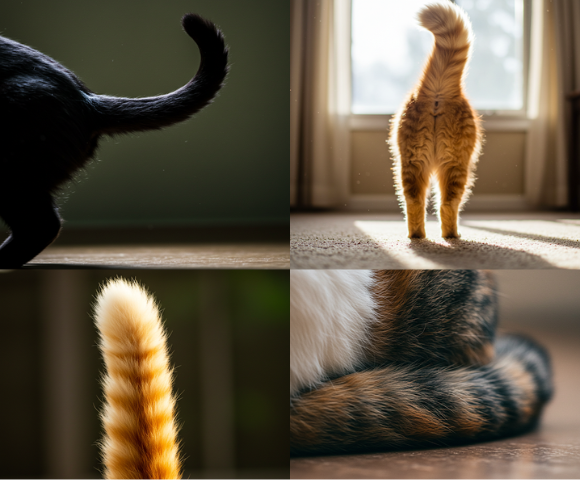
You might observe several types of tail wags in your cat, and each can tell you something different about their current state of mind.
If your cat sees a bird outside and their tail is twitching quickly, they are probably frustrated because they can’t reach the bird. This type of wag can also occur when a cat is annoyed or overstimulated during petting.
A slow, gentle back-and-forth sway of a cat’s tail often indicates playfulness or curiosity. You might see this when your kitty is stalking a toy or observing something interesting. It suggests they are engaged and focused.
A cat holds its tail high and upright when happy and confident. This position can also mean the cat is saying hello. Sometimes, the tip of the tail may twitch slightly, which shows the cat is excited or eager.
A tail held low or tucked between the legs is usually a sign of fear, anxiety, or submission. Your cat might display this posture if they are feeling threatened or insecure.
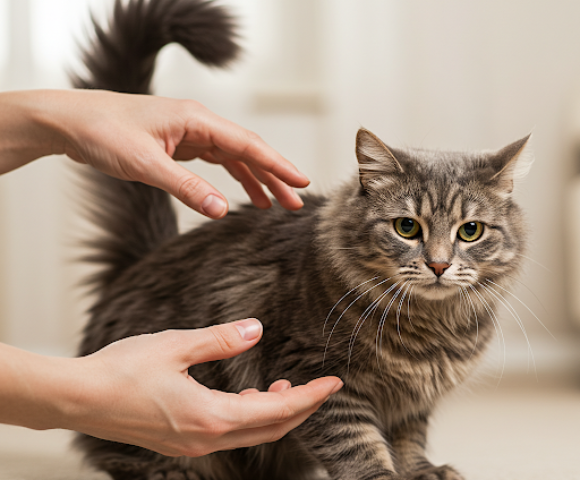
While most tail wags are related to emotional states, persistent or unusual tail twitching could sometimes indicate a medical issue, such as pain or discomfort. If your cat’s tail twitches frequently for no apparent reason or shows other signs of illness, it’s best to talk to your vet.
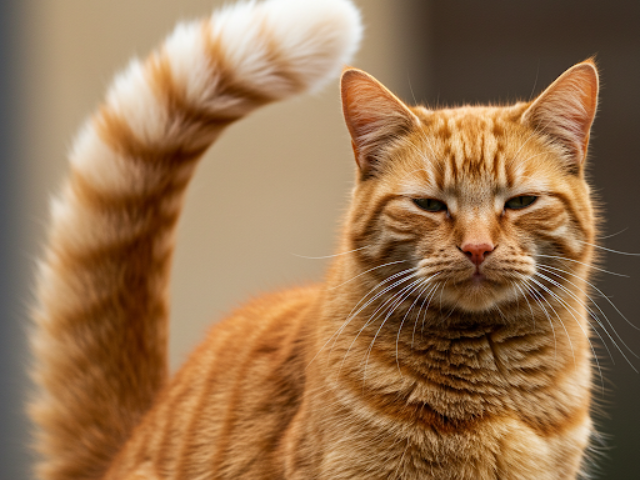
We already know the different meanings of cat purrs and tail wagging, but what does it mean if you see your cat purring and wagging their tail? The meaning behind this combination depends heavily on the situation and your cat’s overall body language. Let’s look at some examples of when this combination could be positive or negative:
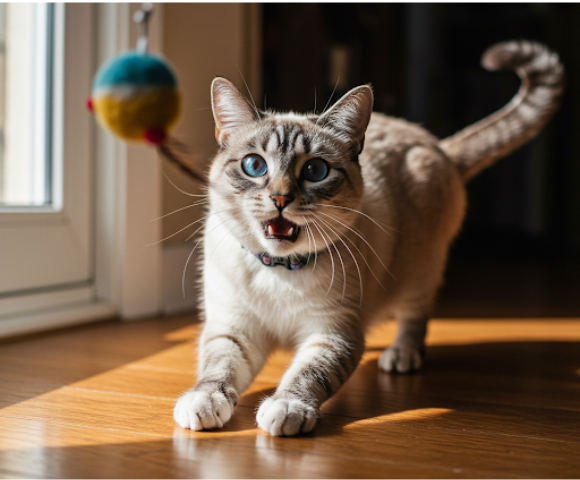
During play, cats often purr and wag their tails simultaneously. However, this combination can also mean that your cat is overstimulated. If their pupils dilate or ears flatten, it’s a sign that they need a break. Here’s how you can calm an overstimulated cat:
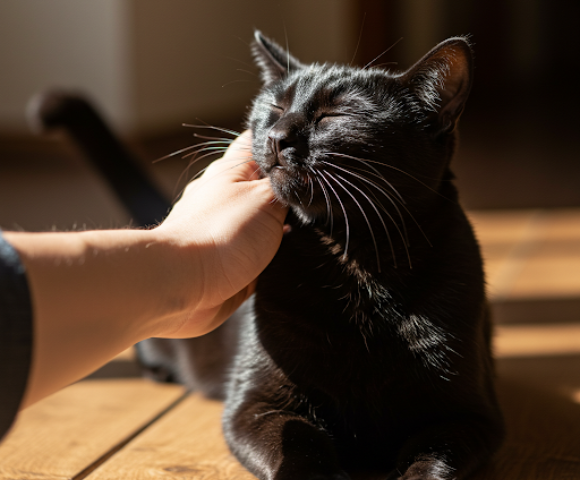
If your cat is wagging its tail and purring while being petted, it generally means they love the attention. However, if the tail starts twitching rapidly or the purring becomes louder, your cat could be overstimulated. Here’s how to handle this situation:
Understanding your cat’s language isn’t just about knowing the meanings behind their purrs and tail wags. It’s also about reading its ears, eyes, and posture. Learning every subtle gesture, behavior, and stance of your whiskered buddy can help you become a better listener.
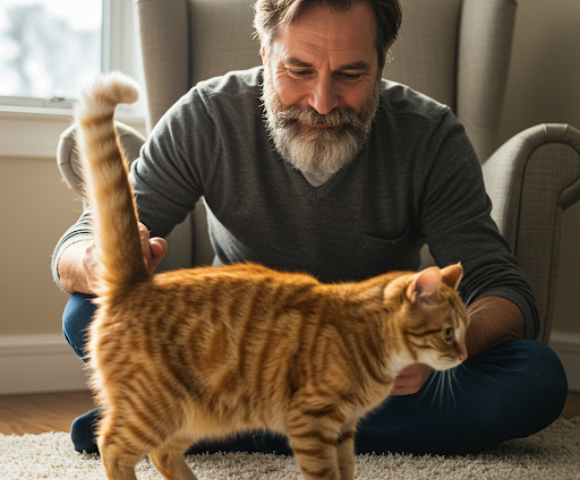
Observe how your cat reacts in different situations, and learn their unique cues. Watch how their ears swivel when something catches their attention or their eyes narrow when annoyed. These little signals add to a clearer picture of your cat’s mood.
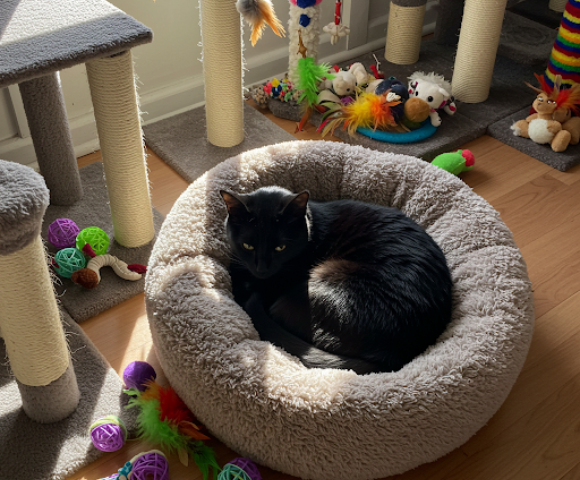
A happy and secure kitty will likely communicate their needs and feelings. Provide your cat with plenty of resources, such as food, water, litter boxes, scratching posts, and comfortable resting places. Ensure they have opportunities to engage in natural behaviors like hunting, scratching, and climbing.
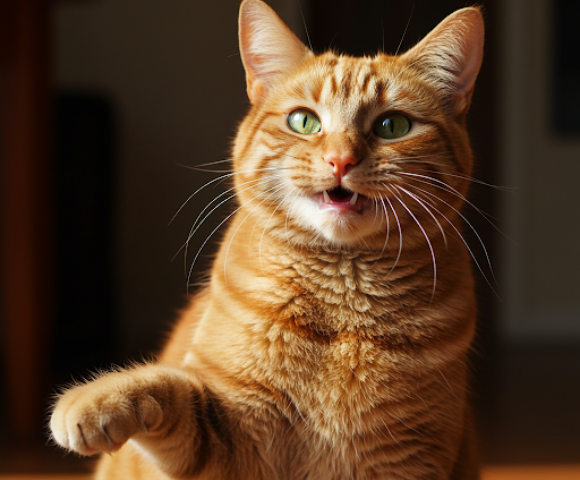
Every cat is different. Just like you wouldn’t judge a friend by a single quirk, your cat has its own personality. Some felines are more vocal and affectionate, while others are more reserved.
Learning what makes your cat tick helps you spot when something is off. Start small by introducing new items gradually. Whether it’s a new toy or a change in the layout of your home, let your cat adjust at its own pace.
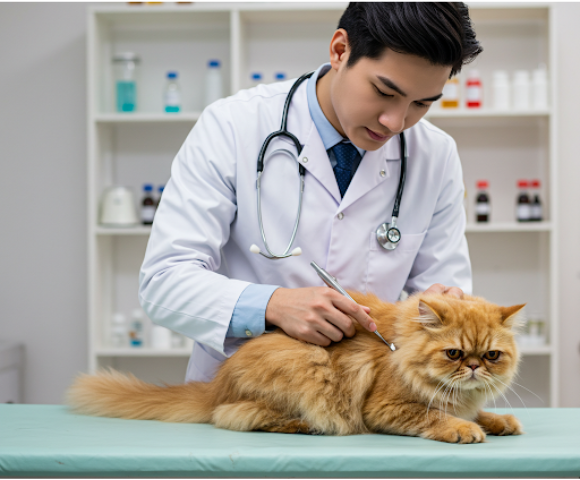
While you’re getting to know your cat’s language, there might be times when professional help is needed. If your cat’s behavior changes out of the blue—like its purring and tail wagging become erratic or paired with signs of pain—it could be time to consult a veterinarian or a feline behaviorist. Their expertise can help rule out any medical issues and provide advice to support your cat’s needs.
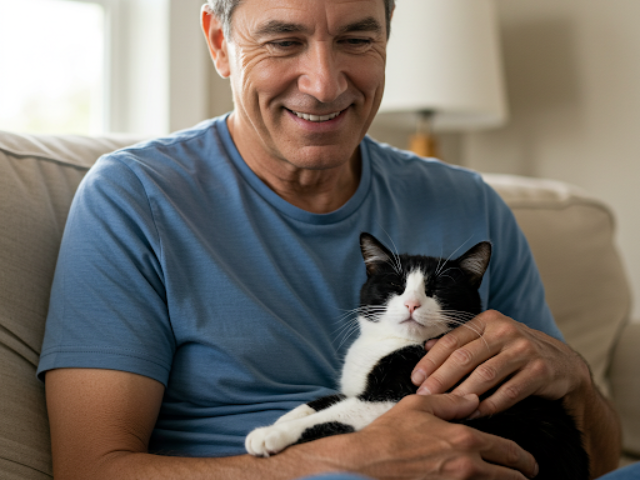
Listening to your cat’s purrs and tail movements unlocks better communication. By learning what each sound and gesture means, you can tell when your cat is comfortable, anxious, or even in need of a little extra care. Remember that your pet’s behavior is about perspective—observing the entire picture is the only way to understand your feline friend.
As you put these insights into practice, you’ll create a warm, secure environment for your cat. Enjoy every moment of those soft purrs and expressive tail wags, and celebrate the special bond you share. Visit our store, ZezeLife, and check out our paw-some toys and accessories that keep your cat happy and engaged!

